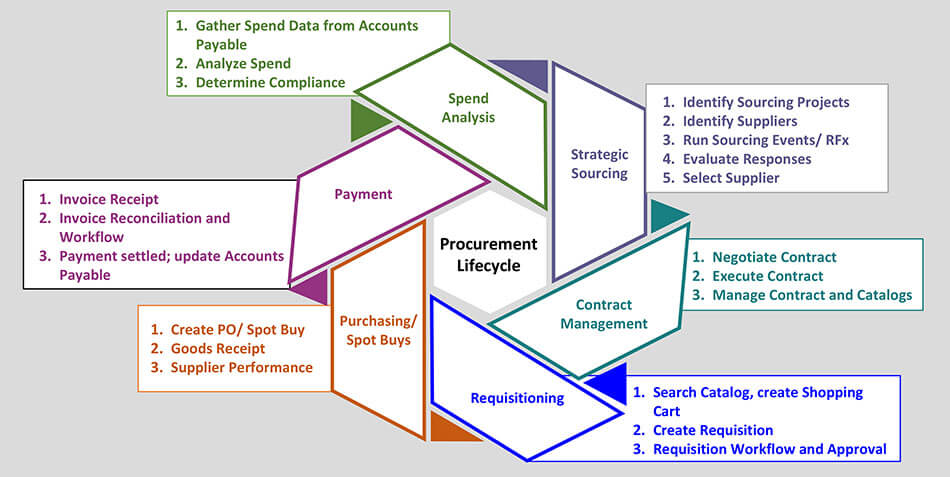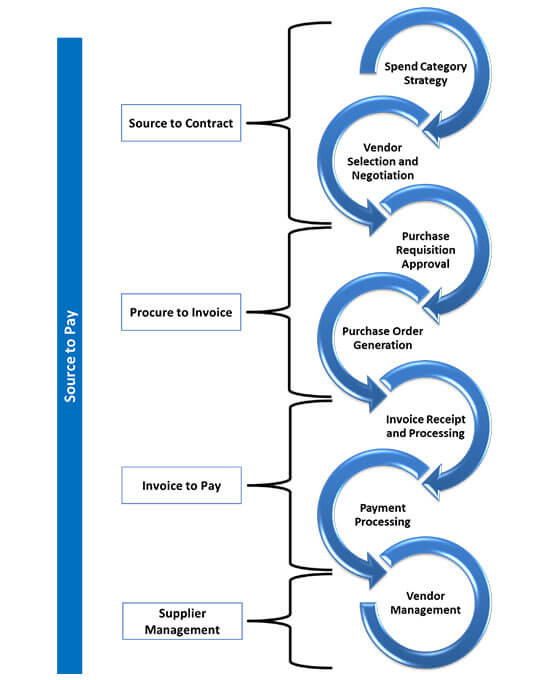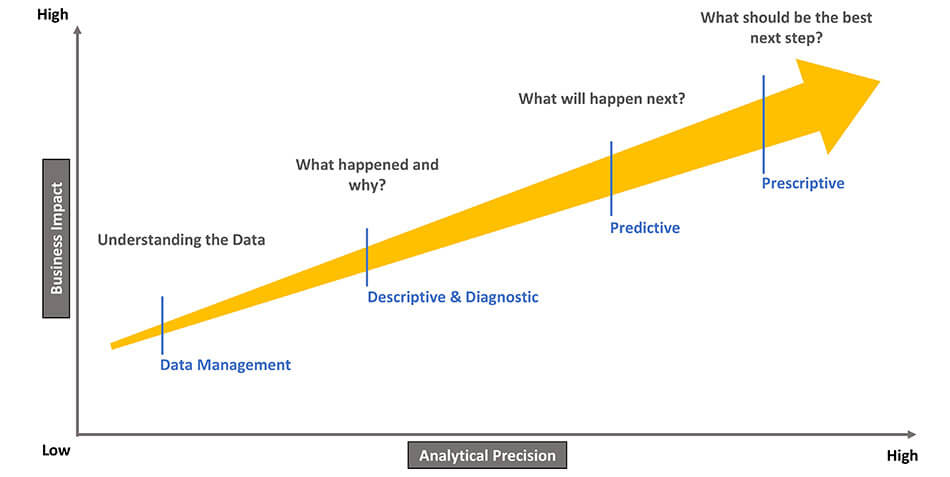INVITING APPLICATIONS
14th SSF EXCELLENCE AWARDS & RECOGNITION – 2025
LAST DATE: JUL-25 | APPLY NOW
Procurement analytics is the process of collecting and analyzing procurement data to form meaningful insights and aid effective business decision making. It has emerged from the need to understand past procurement performance to guide future actions. Examples range from simple spend analysis to predictive modelling. It typically involves collecting data from several different source systems, classifying them into standard/ use-case specific taxonomies and displaying information using business intelligence tools.
Improving spend efficiency, reducing costs, digitalizing
well-designed source-to-pay processes holds significant
promise as a new way to streamline all aspects of the supply
chain management and delivering value to business.
Basics First
Procurement, as we know it, is one of the key functions involved in a supply chain process. It involves several tasks including buying goods, negotiating prices, developing quality standards, financing purchases, paying for the goods, inventory control and disposal of waste inventory. Once the company is in possession of the goods and paid for, procurement process comes to an end. For companies to profit from this process, the cost of procuring the goods must be less than the amounts budgeted against procurement of such goods. At times the procurement process is also known as P2P (procure-to-pay). Typically, a P2P process begins with the requisition of goods and ends with payment being made to the vendor. As sourcing is now developing into distinct science in itself, the boundaries of P2P are being expanded to include it into the fold. Hence source-to-pay (S2P) has become the new norm. It adds strategic sourcing to the P2P process, providing an even more closely integrated spend management solution that encompass all the activities required by an organization to obtain and pay for goods.

The goal of an integrated S2P solution is to build value by tightening internal controls and refining supply chain efficiency and vendor relationship management.
A Well-Designed Source-to-Pay Process
A robust procurement management process is important due to two reasons. Firstly, procurement is considered a core component of a company’s corporate strategy and as with others, this too is undergoing major digital disruptions. Secondly, procurement could be a substantial portion of its overall spends thereby making a huge difference between success and failure of the business. Though the purpose of procurement is simple – consistently purchase high quality, minimally priced materials and services, and have them delivered within the prescribed timelines, an integrated vision of conceptualizing, designing and constructing the actions that make the procurement process happen – is more complicated. A well-designed S2P process aligns all activities from strategic sourcing all the way through to vendor management i.e. moving from source-to-contract (S2C) to procure-to-invoice (P2I) to Invoice-to-pay (I2P) and finally to vendor management.
a core component of a company’s corporate strategy and as with others, this too is undergoing major digital disruptions. Secondly, procurement could be a substantial portion of its overall spends thereby making a huge difference between success and failure of the business. Though the purpose of procurement is simple – consistently purchase high quality, minimally priced materials and services, and have them delivered within the prescribed timelines, an integrated vision of conceptualizing, designing and constructing the actions that make the procurement process happen – is more complicated. A well-designed S2P process aligns all activities from strategic sourcing all the way through to vendor management i.e. moving from source-to-contract (S2C) to procure-to-invoice (P2I) to Invoice-to-pay (I2P) and finally to vendor management.
A fundamental starting point is acknowledging the existence and role of two distinct processes within sourcing and procurement: strategic and operational.
Strategic processes include:
- Annual planning of sourcing programs
- Identifying long term requirements
- Supplier relationship management
- Risk planning
Operational processes include both tactical and transactional processes involved in procurement.
These are typically:
- Operational processes include both tactical and transactional processes involved in procurement. These are typically:
- Approving the request for purchase
- Catalogue maintenance and Master data management
- Finding suppliers
- Making inquiries and receiving quotations
- Negotiating the terms
- Contract management
- Making a final selection of the vendor
- Creating and executing purchase orders and goods receipt
- Shipping management
- Receiving invoices and making payments
- Following up day-to-day on deliveries and purchase orders, and so on......
Data Analytics for Procurement
A digitally operated procurement process generates large amounts of in-house data in terms of actual transactions executed, enquiries sent out, responses from various suppliers, other alternates to required goods and market conditions. In addition, tons of data can be obtained from industry forums and from procurement specialist firms – usually for a price. This huge cache of data is a gold mine of information to be tapped and analyzed for creating intelligence and insights.
In the modern business world almost all companies resort to procurement analytics to secure their strategic edge – be it cost assurance or continuity assurance. These could well be large, midsize or growing companies across industry verticals that need cost savings, efficiency, transparency and effectiveness. The requirement of procurement analytics is not industry specific, though industries with very high material input costs use it to their best advantage – e.g. construction and real estate.
Most organizations recognize procurement as a critical business contributor.
Typically, 40 – 70% of all costs are procurement related, and
these costs are often volatile, but important source of competitive
advantage. Effective organizations leverage data to
effectively manage supplier relationships, growth and
even bring new innovations to life.
It helps with the decision-making process by keeping procurement teams well informed with intelligent data and relevant time-stamped information. A good procurement analysis cannot happen without having the necessary data and process building blocks in place.
For Procurement and Sourcing, big data and advanced analytics can have the following implications:
- raising data-driven decision making to a new level,
- helping companies to generate new insights, and
- enabling them to collaborate at scale.
Advanced data analytics is used to enable procurement functions to assess risks with much more accuracy, including risks arising from business continuity, outsourced business processes, regulatory compliance and cyber threats.
A common problem for procurement analytics is identifying a starting point. The procurement team needs to assess their position on the ‘analytics value chain’, to get a true picture of where they currently stand and only then actions can be taken to move forward - based on level of maturity and the business questions to be addressed. Soon procurement decision-making will be significantly influenced by high-quality data analytics.
As analytics becomes more powerful, procurement will become increasingly central to business decision-making.
The field of procurement analytics has emerged from the need to understand past procurement performance to guiding future decision making.
The analytics value chain is said to have five check points in
place, as below, and the key to right applications and tolls
lies in identifying which metrics are most relevant to track,
measure and improve.

- Data Management – assessing what data is available and where can it be found?
- Descriptive – where data is analyzed to illustrate what has happened in the past.
- Diagnostic – where data is interpreted to understand why something has happened in the past.
- Predictive – where trends & patterns in data is used to forecast future performance.
- Prescriptive – making predictive models based on data to aid in insightful decision making.
In many organizations, analytics in procurement not only relates to spend analysis but also touches all activities - from strategic sourcing to category management and procure-to-pay processes. Across different organizations there may be different applications of procurement analytics. Some of the most common examples include:
- Spend analytics – the analysis of procurement spend data from internal or external data sources.
- Contract analytics – the analysis of supplier contracts and their meta-data, such as payment terms and expiration dates.
- Supplier analytics – the analysis of performance of individual suppliers or comparison of supplier performance.
- Savings lifecycle analytics – the analysis of savings projects and their impact on the financial bottom-line.
- Spend forecasting – the forward-looking analyses of likely procurement spend data and its impact on profitability.
- Procurement benchmarking – the comparison of a procurement organizations’ performance to peer or best-in-class benchmarks.
Business Case for Procurement Analytics
Emerging digital and advanced analytics tools promise new levels of procurement performance. Until about 2017, many companies thought it was futile to try to extract savings from the low-volume purchases or ‘tail spend’ as a part of procurement process. New technologies have completely changed this equation today and have proven otherwise. Common business objectives for procurement analytics include:
- Cost reduction – identification of savings opportunities and measuring such savings.
- Risk management – identification and mitigation of supplier or market risks within procurement operations.
- New opportunity identification – explorations of new or more strategic ways to manage suppliers or categories based on historic procurement data.
- Improve cash flow – highlight ways to improve operational cash flow, for example, through payment term optimization.
Procurement analytics will enable the team to have access to all relevant data on cost structures, supply availability, lead times, financial and operational risks, and service and quality metrics.
This in turn will enable the team to negotiate the “right” prices, instantaneously switch to alternative suppliers in the event of supply shortages, proactively help suppliers improve deteriorating quality levels by spotting problems earlier and identifying their root causes more accurately.
Below are a few key areas on where analytics is enabling the procurement processes to become robust and add value.
- Category management: Big-data analytics enables identification of savings opportunities; segmentation and prioritization of suppliers; address supply risk opportunities; and facilitate innovation.
- Strategic sourcing: Analytics helps to identify the best times and areas to run sourcing events and requests for proposal. It can identify which suppliers to include in sourcing projects and provide rich information into supplier’s quality and risk positions.
- Contract management: Analytics provides value across contract lifecycle management. It can alert when contracts need to be renegotiated or provide data for supplier negotiations, and identify maverick spend to help compliance and improve contract coverage.
- Issuing RFQs: Data-analytics tools enable multiple bidding rounds. After an initial round, bidders can see how their bids compare to a top group of other bidders, and whether their bid is an outlier. In a final round, they can also receive target prices, which are based on previous bidding behaviour. Analytics on quantitative criteria (such as prices and order quantities) and on qualitative criteria (such as distributor rankings) can also help in identifying the best bidders in the pool.
- Procure-to-pay: Procurement analytics can provide much value in the transactional side of procurement. The purchase order cycles can be measured to improve payment terms, re-evaluate payment accuracy, identify mistaken payment and reduce fraud.
- Procurement Analytics in CSR: Companies are now realizing the value of analytics in assessing sustainability and corporate social responsibility within the supply chain and procurement function. Analytics can uncover the environmental or social impact of procurement decisions and identify opportunities for more sustainable alternatives.
Sources & Security of Procurement Data
Increasingly, procurement analysts are starting to leverage data from outside of their own procurement organizations, combining the most valuable aspects of internal and external data, giving rise to the challenge of heterogeneous data landscapes. Technology is being used for extract maximum savings and value from the supply chain and for internal process optimization. It is crucial to protect these systems from tampering, manipulation or corruption. Cybersecurity has become critical to safeguard this sensitive information.
Extremely strong technologies like Blockchain are fast being
deployed to improve cybersecurity to processes ranging from
source-to-pay, contract management, financial & inventory
audits, and analytics systems.
Working of Procurement Analytics Machinery
Procurement analytics bring visibility into spend and supplier performance and help un-tap the potential savings and opportunities. Data insights can be obtained in three steps:
Step 1
Data extraction: Extracting data from all possible sources and consolidating it into one central database. This converts outdated and messy sources of information into a clean and consolidated format that can be easily understood and ready for analysis.
Step 2
Data cleansing, categorization and enrichment: Once data has been extracted, it is ready to be enriched and cleansed into clear and defined categories. To make spend analysis effective, a precise data classification is needed, as it makes the heterogeneous spend data easier to address and manage across the organization. This process harmonizes all purchase transactions to a single taxonomy in order to enable customers to gain visibility of global spending.
Step 3
Reporting and analysis: After the data has been classified, it is now ready to be analyzed. Spend analysis gives the needed visibility to deliver insightful analysis for accelerated opportunity identification, smarter sourcing decisions, with full control on spending. An access to an accurate spend analysis is the key for massive savings and potentially realizing the opportunities.
Some of the commonly brought out insights though procurement analytics could impact the various segments of the organization. For instance reporting on metrics can be on fronts, such as:
- Pricing metrics: To understand whether the organization is paying different prices for a similar product or service across its divisions and geographies – a common problem since divisions/geographies often don’t have a mechanism of sharing such information at the base level.
- Financial metrics: To understand how working capital can be optimized by using payment terms as a key lever and to control spend above the budget by comparing the budget or the PO value with the actual invoicing.
- Compliance metrics: To understand any variances from the defined process and agreed KPIs. Typically, these cannot be completely avoided but should be controlled as they always come with a higher price point.
- Supplier base metrics: To understand the performance of the existing supplier base and identify opportunities to consolidate further, such as using more global contracts to secure better pricing.
- Leadership metrics: To understand and track the overall procurement performance and efficiency of the procurement team at a leadership team level.
Future of Procurement Analytics
Analytics is all set to give firms unprecedented access to valuable data about their key stakeholders, i.e., suppliers’ businesses as well as their customers’ priorities. Businesses will soon begin to integrate the supply and demand chains of their suppliers and customers. In the coming years, advanced data analytics will give procurement teams more insight, thus empowering them more than ever before, as advanced analytics tools, largely based on applications of social media, cloud, big data and mobile technologies, essentially change the function.
In addition, further development of enhanced artificial intelligence (AI) tools will take analytics beyond real-time operation. AI will carry out prescriptive analytics and take automated decisions, based on past data, expected occurrences and its inherent cognitive prowess.
The emphasis on maximizing ROI (return on investment)
and value creation, backed by minimal waste and
expense, will remain a top priority for procurement
professionals worldwide.
Experts at research firms have developed a variety of roadmaps defining the future of procurement and related analytics. Gartner, for instance, has predicted that in the next 2 years:
- 50 % of existing procurement market place in dollar terms would have moved to AI and cloud-based procurement and spend analytics platforms.
- 75% of all B2B one-off spend (i.e. “tail spend”) will be made in online marketplaces such as Amazon.
- All best-in-class procure-to-pay services will include built-in chatbots and virtual assistants to further enhance and streamline procurement while improving security and compliance.
The digital transformation of the source-to-pay function is likely to have a significant cross impact on analytics – from its data source to business impact. New age procurement applications are integrated with analytics as a core functions, obviating the need to create an independent analytics sub-function. Spend analytics is perhaps at the most crucial moment in the history of procurement helping the organizations through focus on innovation, risk and sustainability.
ABOUT THE AUTHOR

Rakesh Sinha is the Executive Director & COO of RvaluE Group and part of RvaluE Group since inception. He is a Computer Science/ IIM Calcutta Alumni with 18+ years of experience in Business Process Transformation and IT/ITeS Industry, and an authorized evaluator for eSCM, CMU USA. He has led several end-to-end Shared Services Operations & Transformation initiatives with Global & India corporates
Rakesh has also co-founded Shared Services Forum, co-Authored first-of-its-kind book on ‘BPM in Global India – The Inflection Point for Competitive Advantage’ and has been one of the youngest to be invited as member of Management Council of DMA. He has been recognized by Insight Success Magazine as ‘Top 30 Most Influential Young Entrepreneurs’ and he was also listed and awarded as ‘India’s Greatest Leaders 2017-18 – Pride of the Nation’, by AsiaOne Magazine & URS Media – Process Reviewers PricewaterhouseCoopers PL”



 Ask an Expert
Ask an Expert



